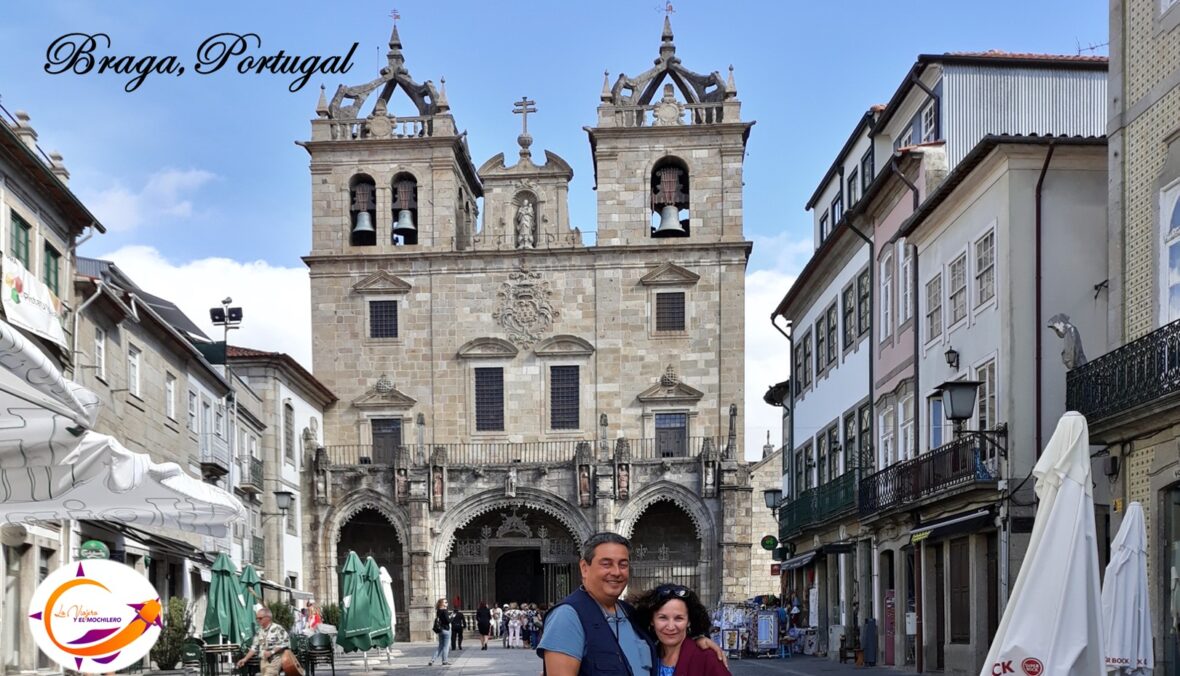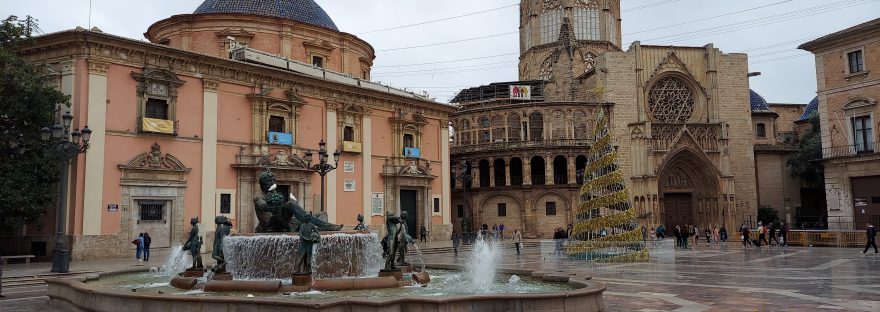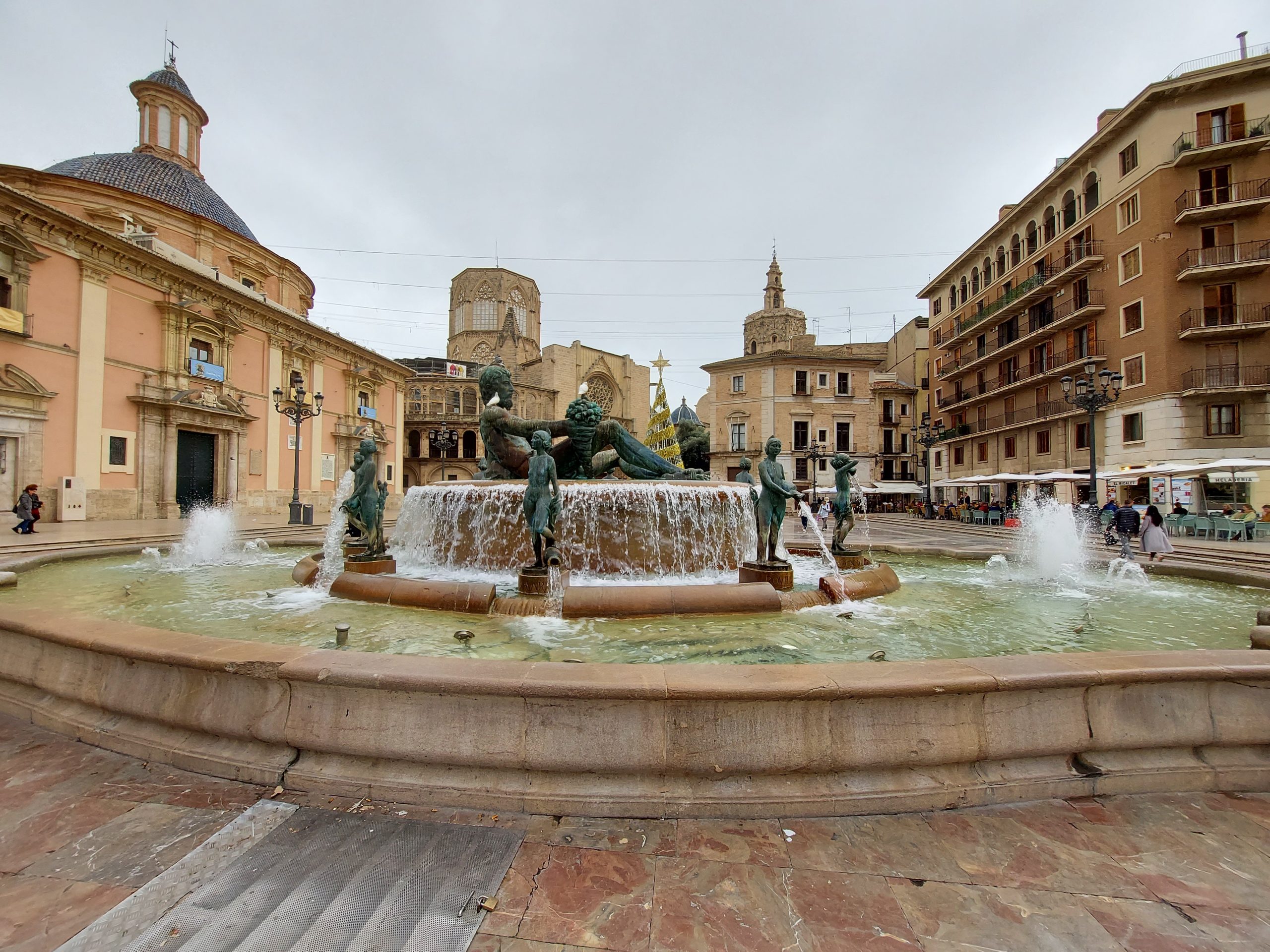
On the first day of our visit to Valencia, we went to its historic center, arriving at the Plaza de la Virgen where the beautiful fountain allegorical to the Turia River immediately caught our attention. Likewise, we observed the Cathedral of Valencia, with its predominant style called “Valencian Gothic” and just to the right side of the cathedral, another temple is located. This one, more sober, although the structure stood out notably for its salmon tonality, which harmonized very well with the architectural details in stone of its façade. We approached to read its name, it was the Real Basílica de Nuestra Señora de los Santos Inocentes Mártires y Desamparados (Royal Basilica of Our Lady of the Holy Innocents, Martyrs and Forsaken). Definitely, a long name, but with a lot of meaning. At that time, the temple was closed, so we could only contemplate its exterior.
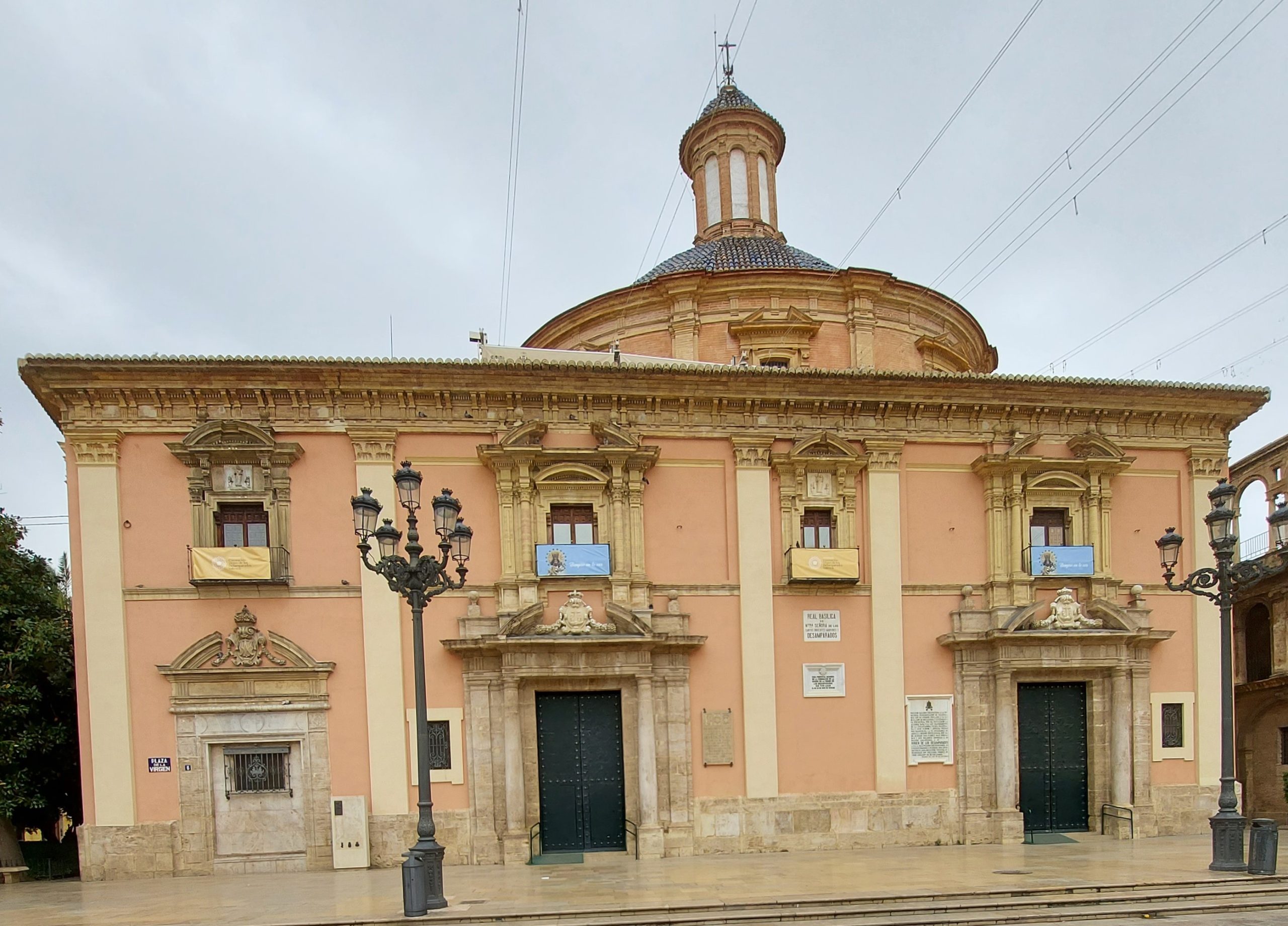
From the façade facing the Plaza de la Virgen, we can see that on the lower level there are two doorways or entrance doors and a third one, today modified in the form of a large window. On the upper level we find four balconies, two of them above the two doorways. The other two balconies have each one of them a tombstone made in white marble with a representation in relief of the Virgin of the Forsaken and inscribed in the marble the date of 1666. This temple, like many others in Spain, is based on Roman archaeological remains found in excavations carried out in 1985. The Basilica was declared a National Historic and Artistic Monument on June 5, 1981.
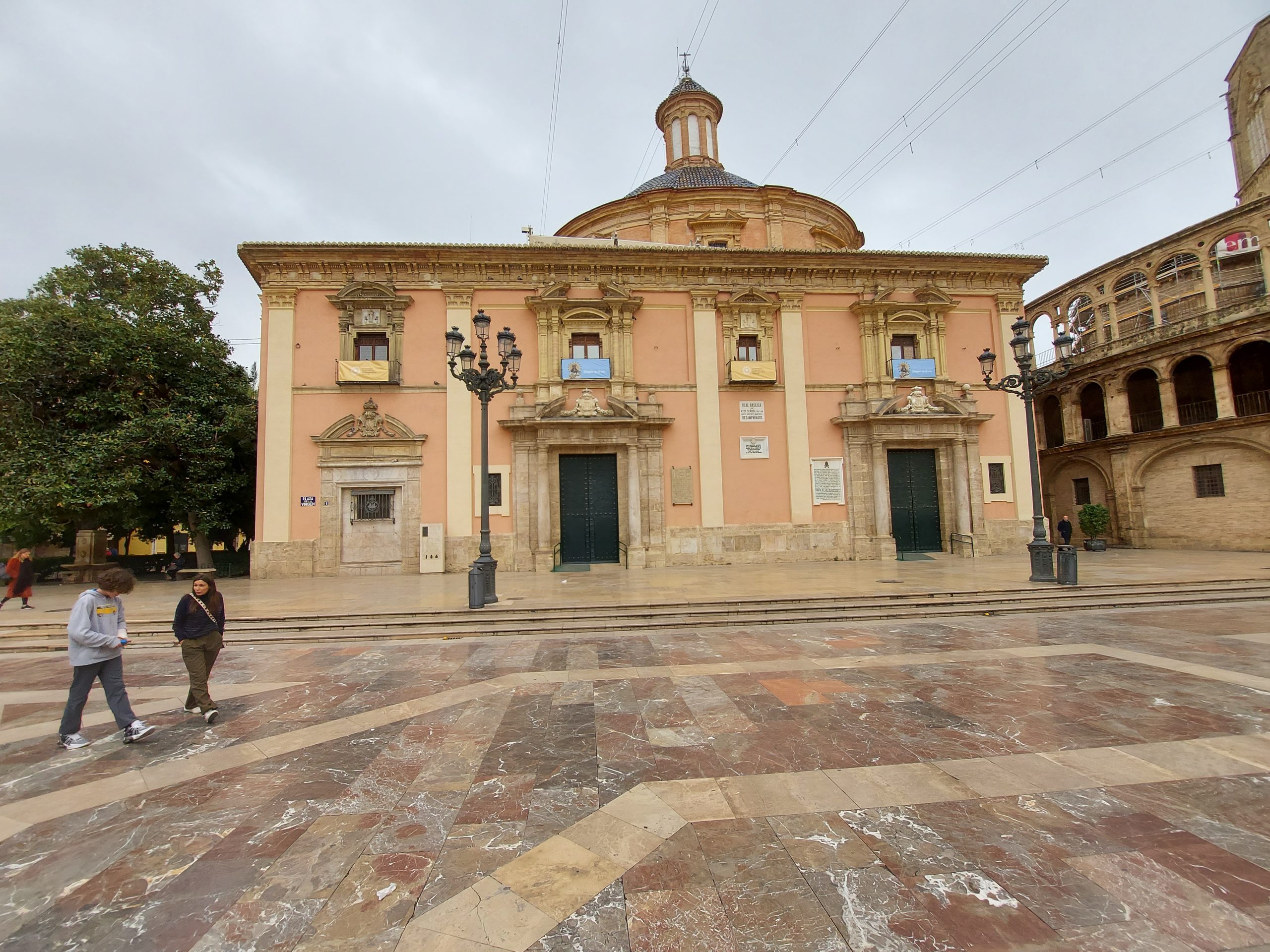
The Royal Basilica of Our Lady of the Holy Innocents, Martyrs and Forsaken is a temple with a trapezoid floor plan, that is to say, almost rectangular. The most outstanding component of this sanctuary chapel is the integration of a large elliptical space crowned by a dome, also elliptical, or oval-shaped, measuring 18.75 meters wide. Although it is not unusual in Catholic churches, the insertion of an oval vault, apparently, is in the city of Valencia, whose domes tend to be mostly circular.
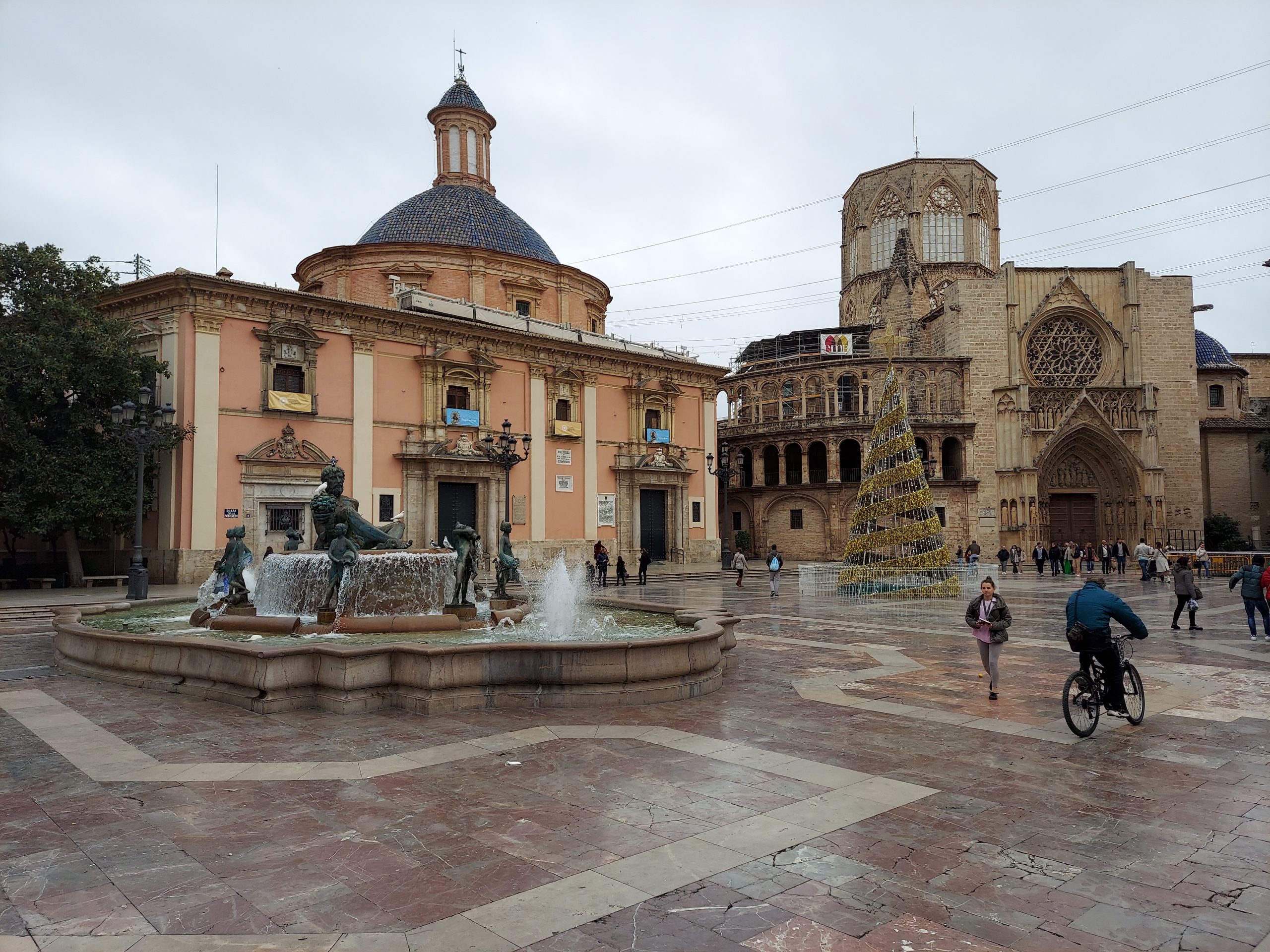
With the category of Basilica since 1872, this temple began its construction process in 1652, a project that was commissioned to the architect Diego Martínez Ponce de Urrana, a native of Requena, a Spanish municipality that belongs to the Valencian Community.
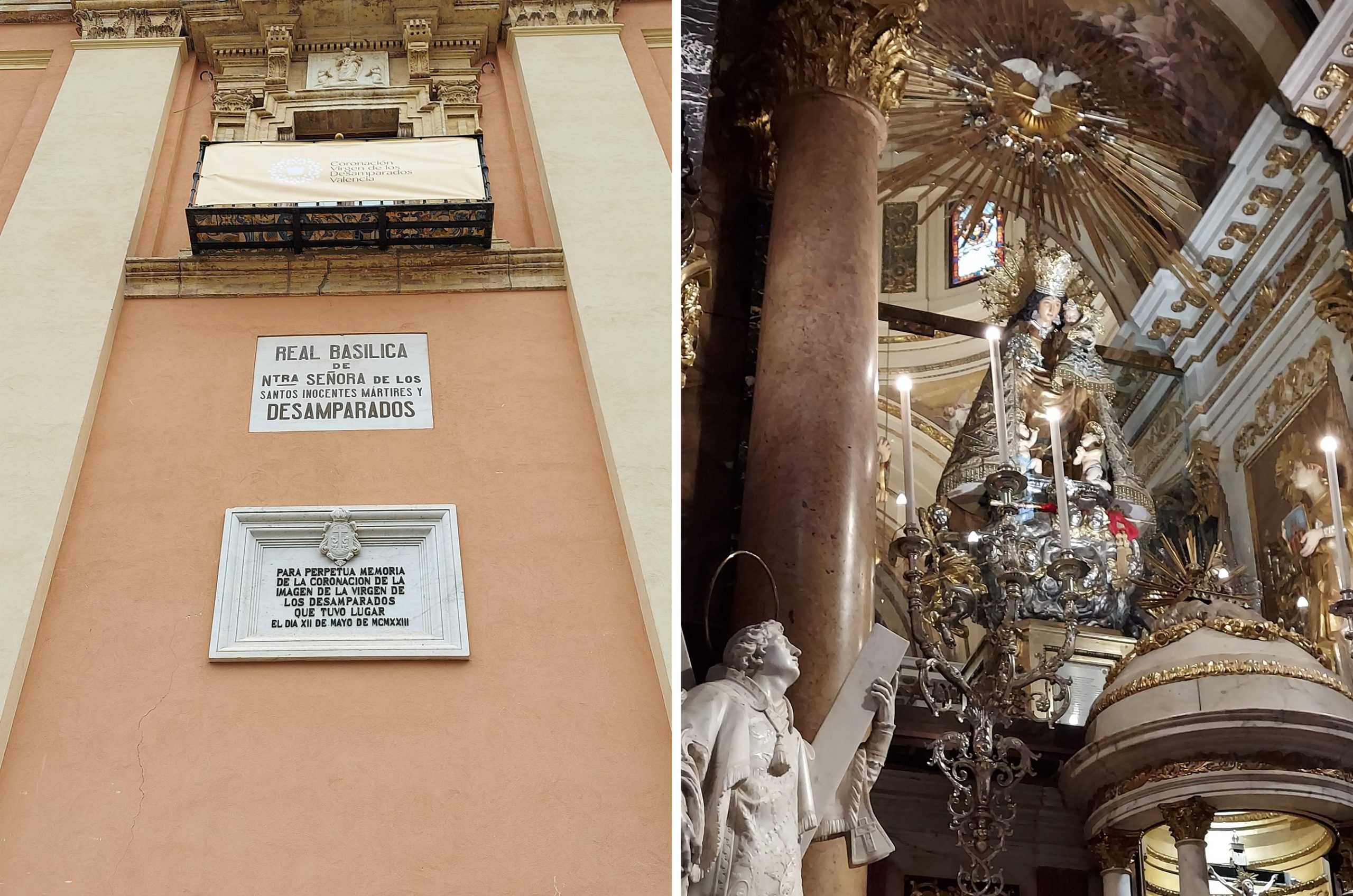
Between 1652 and 1660 the exterior facades were built and it was towards the end of 1660 or the beginning of 1661 when the construction of the elliptical vault began. The work was completed in 1666 and on May 15 of that same year the image of the Virgin of the Forsaken was transferred from the Cathedral. It is the virgin, patron saint of the city, affectionately known as the “geperudeta”, that is, the “hunchback” in Valencian language, due to the fact that she is slightly inclined forward.
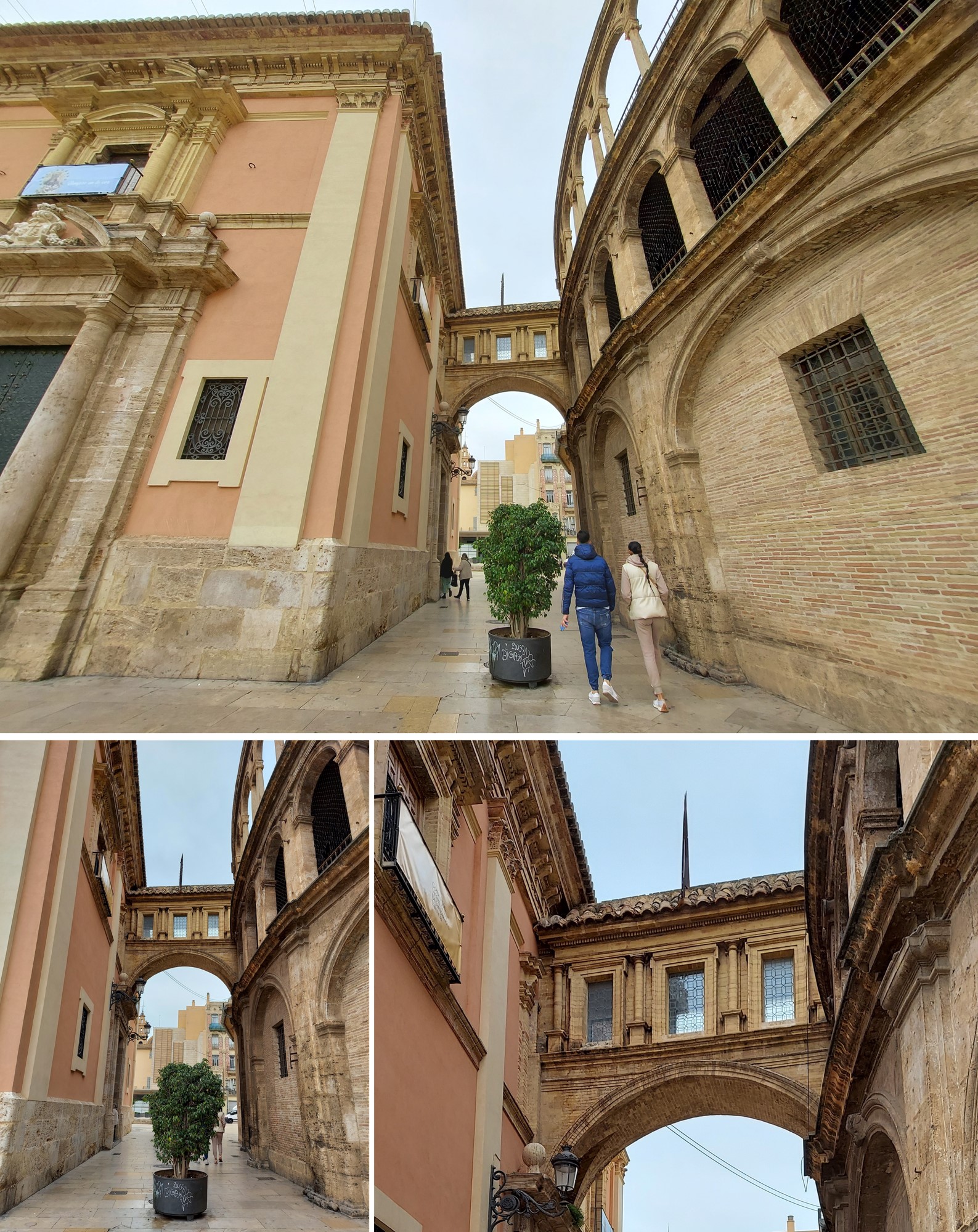
One element that caught our attention was the elevated bridge that connects the Basilica with the Cathedral of Valencia. Known as arco novo, it was built in 1659.
On the second day of our visit to Valencia, we had the opportunity to enter the interior of the Royal Basilica of Our Lady of the Holy Innocents Martyrs and Forsaken. We observed its decoration made between 1763 and 1767 by the architect Vicente Gascó Masot, according to designs of 1762 by the master builder José Herrero. The classical style is distinguished in its pillars, capitals, pediments and windows, in the use of gold and marble, among others. All the ornamentation forms a single stylistic unit in the purest neoclassical style. The interior of the temple is structured around a central oval supported by eight monumental red marble pillars attached or glued to the surfaces that form that oval.
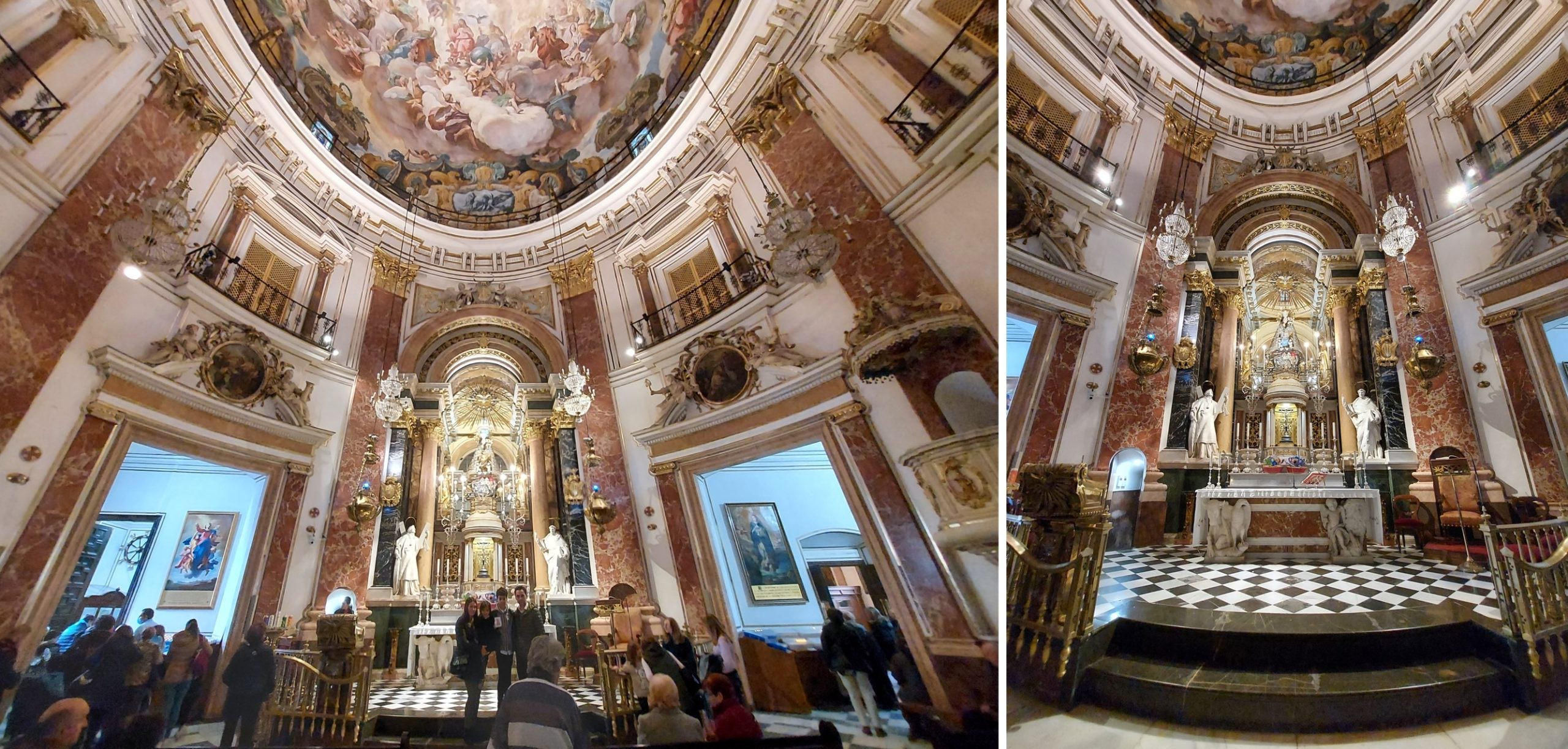
At its head is the High Altar with the image of the Virgin of the Forsaken. In other times a jasper altarpiece was located here, surrounded by nine silver lamps. The current High Altar is a work made around 1775 by Juan Pedro Arnal, on a sketch made in 1770 by Vicente Gascó. Permanently guarding the Virgin inside the basilica, there are two white marble statues, one on each side of the Virgin, works of José Esteve Bonet. They are the sculpture of St. Vincent Martyr (1798), patron saint of Valencia and St. Vincent Ferrer (1797), patron saint of the Valencian Community.
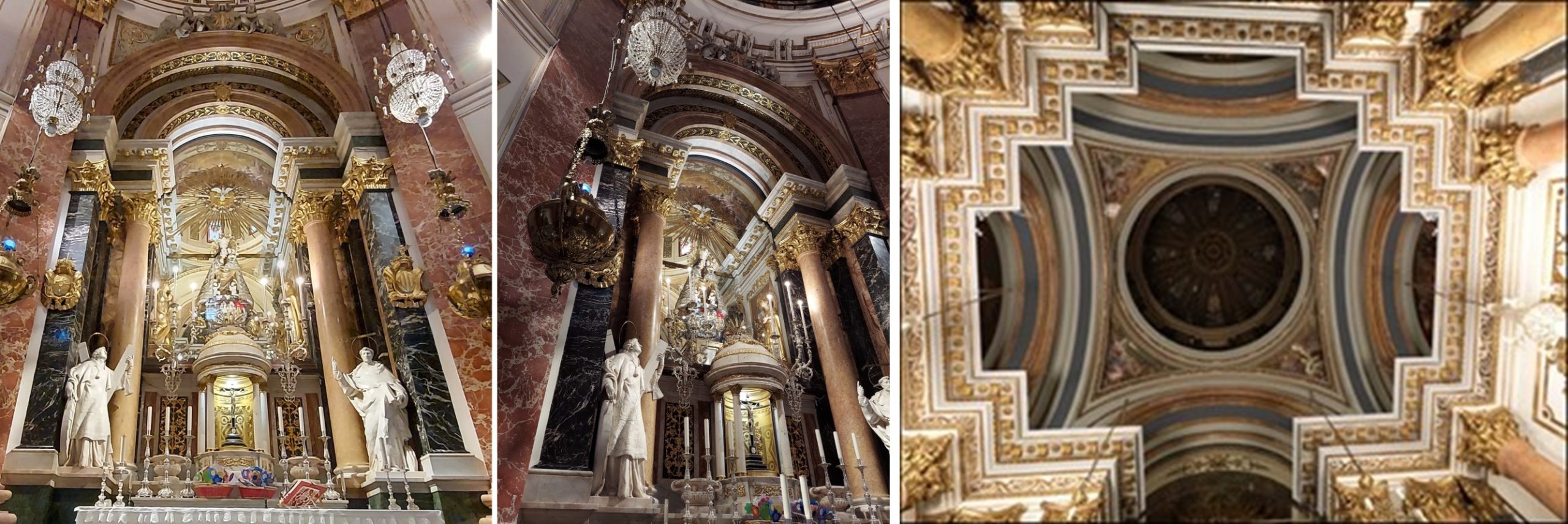
Behind the Main Altar, there is what is known as the “camarín de la Virgen”. The camarín is a small chapel, in which the image of the Virgin of the Forsaken is venerated. It is located on the second floor, neoclassical style, is covered with a hemispherical dome and consists of a rectangular space with two sections separated by an iron gate, the first of them is where the faithful gather and functions as anteroom, while the second is the dressing room itself. To these spaces should be added the niche where the image of the Virgin of the Forsaken is housed, which shares communication with the interior of the basilica and the dressing room. It is through a mechanism, that the sculpture of the Virgin turns towards the dressing room. Its construction began in 1685, concluding in 1694. It is curious that thirty-two years earlier, in 1653, it was already present in the original plans of the chapel.
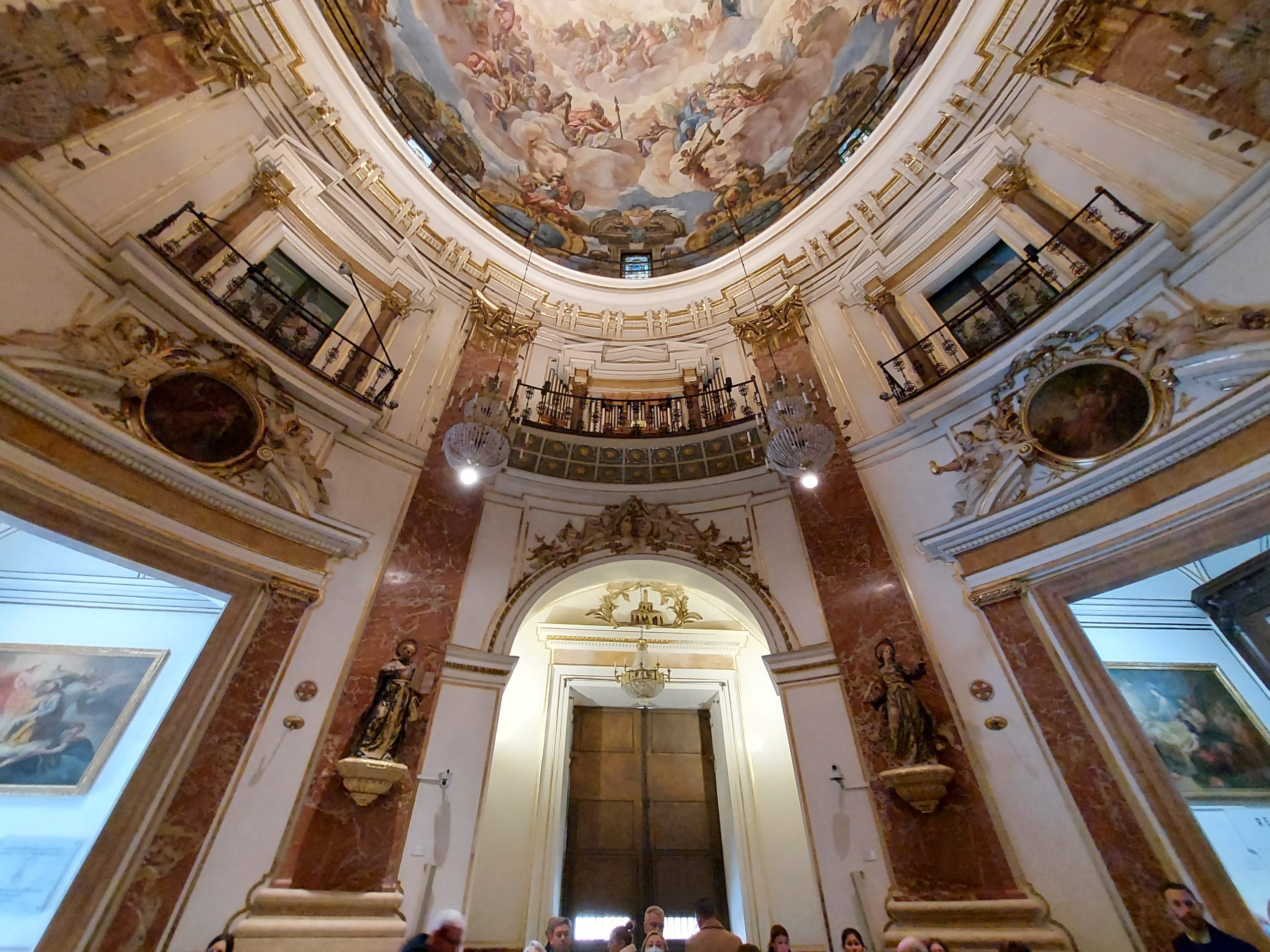
Just opposite the main altar is the organ of the Royal Basilica. It is located in one of the seven balconies or tribunes that are distributed around the oval floor, decorated with stucco columns simulating marble.
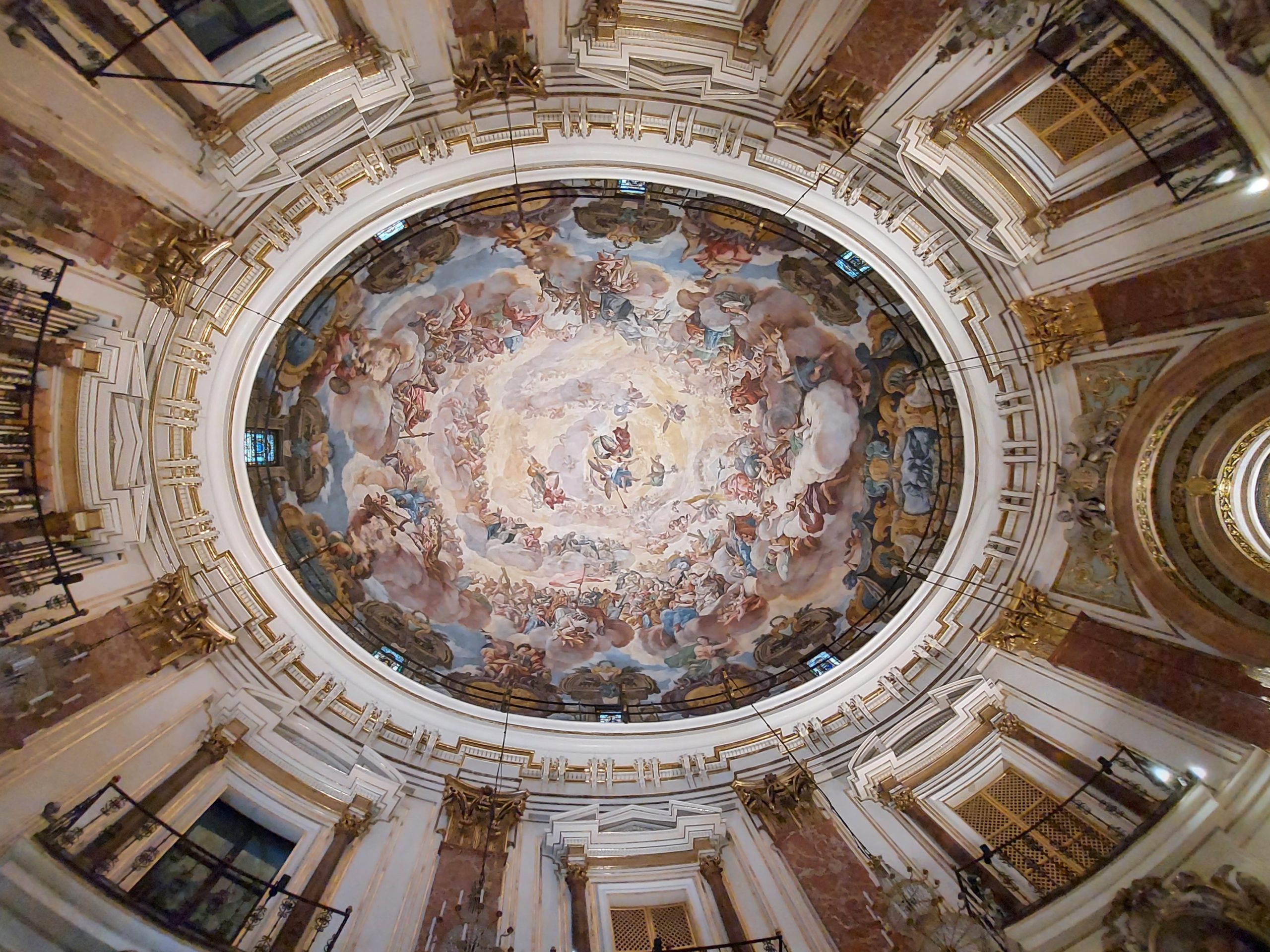
Now, it is the fresco paintings of the oval vault, by Antonio Palomino that left us amazed. Palomino was painter to Charles II and is considered one of the most interesting artists of the transition period from the 17th to the 18th century. His works show the evolution of Baroque painting from the end of the 17th century towards Rococo and, ultimately, the Neoclassicism that would prevail in the 17th century. His style shows the influence of the courtly Baroque or Madrid school of painting, which he got to know during his stays in the capital.
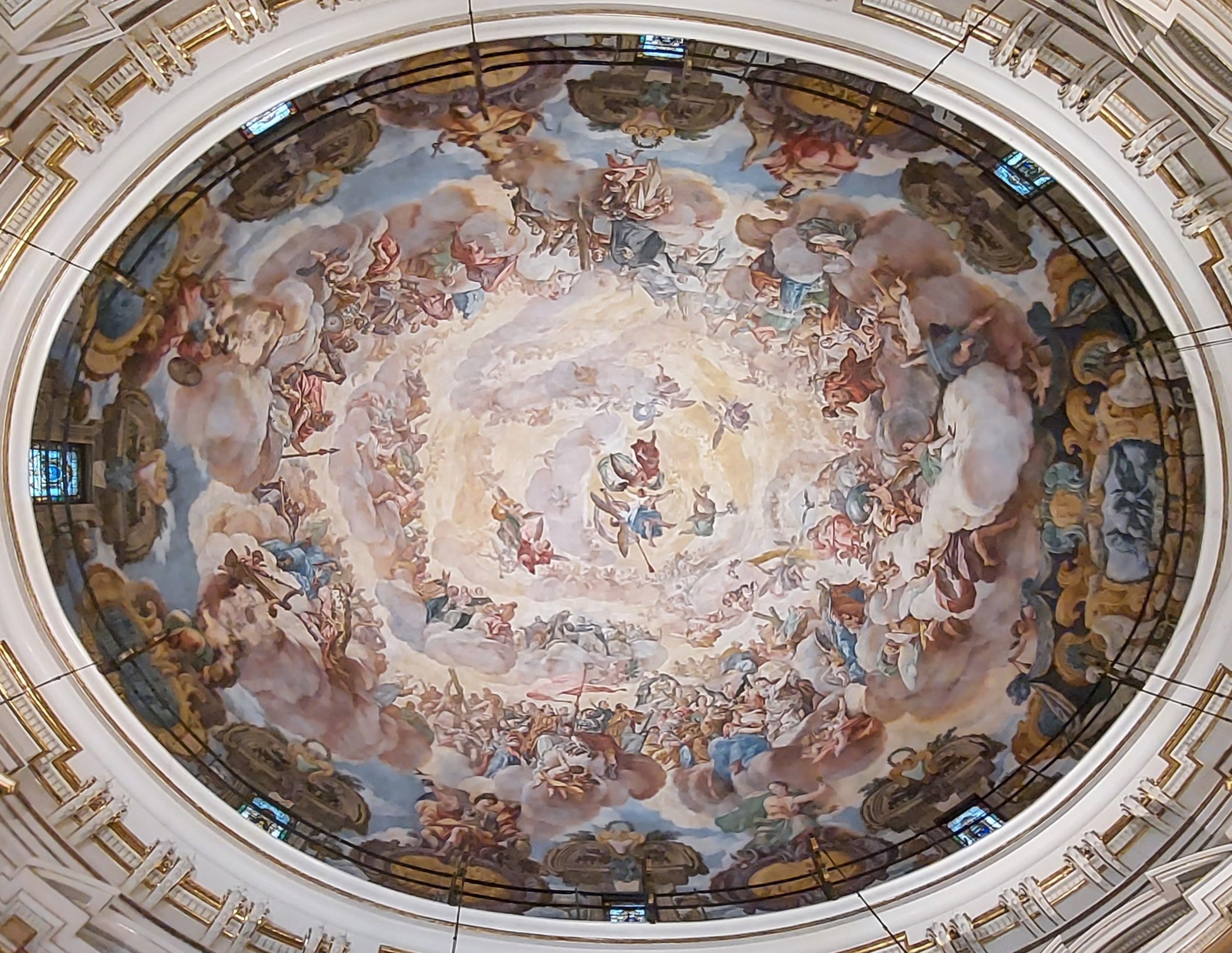
This building was precisely the reason for his arrival in Valencia in 1697. The paintings were made in 1701. Apparently, it could have taken him only one year to complete them, due to the very process of fresco work, where the lime begins its drying process in a period of 24 hours and does not admit the placement of more pigments. Seven stained glass windows are integrated to the vault, which are set in the seven illumination holes of the Central Nave of the Royal Basilica. They were made in 1929 by the Maumejean House and represent the Litany of the Holy Rosary and attributes related to the Virgin.
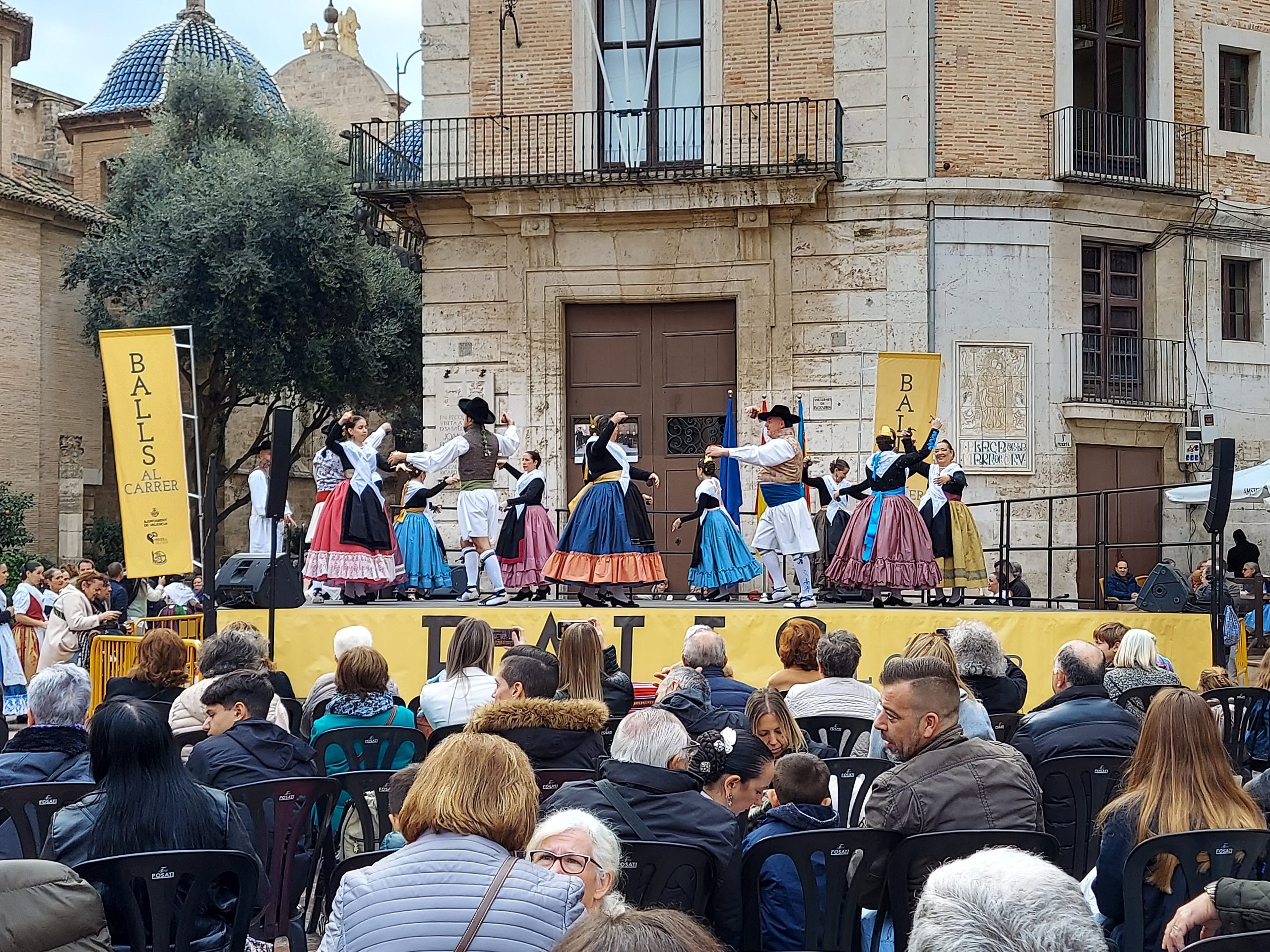
After our visit to the Royal Basilica and its Virgin of the Forsaken, we stayed for a while in the Plaza de la Virgen enjoying an activity that is usually held on Sundays where groups of falla dances, the regional dances of the Community of Valencia, are presented. The falla, is a ritual and ceremonious dance, whose possible origin may have been the pagan dances offered to the god or goddess of fertility, at the end of the harvest.
Here we share with you a little of what was presented there.
*****
Resources:
http://www.jdiezarnal.com/valenciabasilica.html
https://es.wikipedia.org/wiki/Bas%C3%ADlica_de_la_Virgen_de_los_Desamparados
